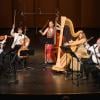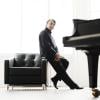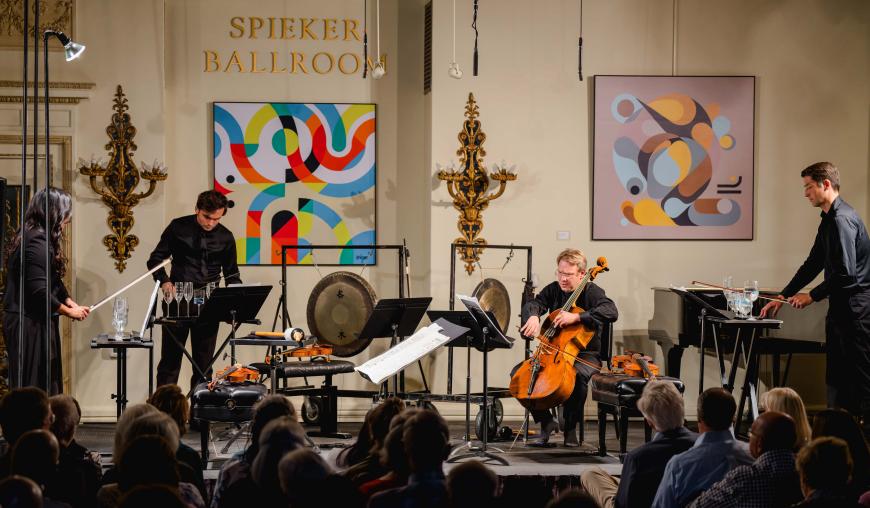
In “Renascence,” a program anchored by two haunting modern masterworks, Music@Menlo got down to some serious business on Thursday, Aug. 8 at Stent Family Hall on the Menlo School campus in Atherton. While Olivier Messiaen’s transfixing Quartet for the End of Time (1941) would envelop an audience on any bill, George Crumb’s vivid Black Angels (1970) more than held its own. If bleak, even despairing shivers ran through both of these poetically programmatic works, they were touched with transforming grace as well.
The concert opened with two gravely beautiful late works by J.S. Bach, one left unfinished and the other purportedly dictated on the composer’s deathbed. Violinists Stella Chen and Paul Huang, violist Masumi Per Rostad, and cellist David Finckel gave The Art of Fugue’s final passage a keenly disciplined but limber reading. As the theme was handed up the line from the cello to Chen’s gleaming first violin, Bach’s genius for enriching a simple musical cell into lucid contrapuntal complexity got its full measure. Listening was like opening a door into branching hallways of possibility. The light went out abruptly, mid-phrase, on the viola. A chorale prelude (“When in the hour of utmost need”) added a closing, quietly reverent meditation on the immortal Bach’s mortality.
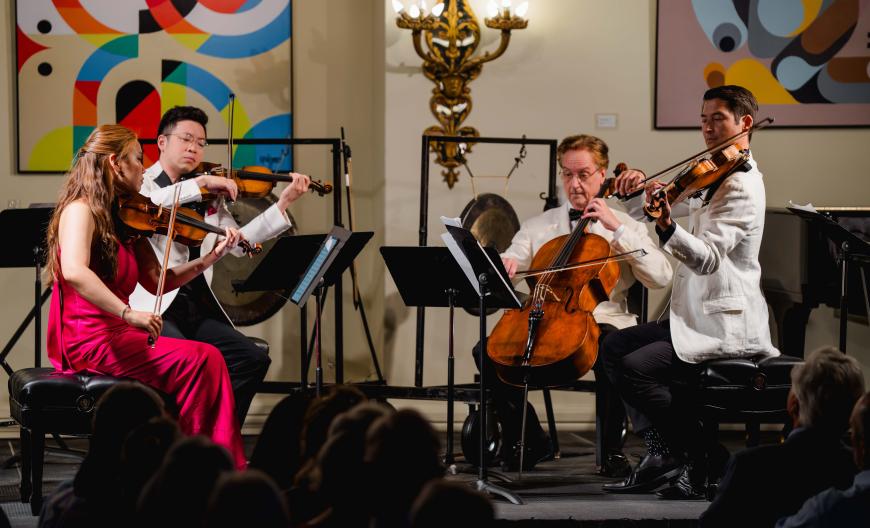
Subtitled Thirteen Images From the Dark Land and scored for electric string quartet, Crumb’s Black Angels made an immediate, madly whirring assault. Listeners didn’t need to consult the program for the name of this first of 13 sections (“Threnody I: Night of the Electric Insects”) to imagine the furiously buzzing swarm. With each new pulse, Kristin Lee and Francisco Fullana on violin, Rostad returning on viola, and Dmitri Atapine on cello thrust forward as one, as if they, too, were under attack.
The sense of dramatic embodiment continued and animated the performance. Dressed in black, the players roamed the sonic contours of timbre, space, time (allusions to Baroque music and Franz Schubert), and nature (birdcalls joined the electric-insect realm). Crumb, whose works often require unorthodox use of instruments, calls on the Angels players to strike the strings with the backs of their bows or thrum them with metal picks. A pair of gongs are struck and eerily bowed. Three sets of carefully tuned and bowed water glasses become the simulacrum of a glass harmonica. Lee gently shook a maraca at several points. She and her companions shouted out numbers and other unintelligible sounds along the way.
What might have seemed a dated, self-serious piece of 1970s iconoclasm came off as a work of integrity, purpose, and in its way, a kind of spiritual aspiration. “Devil-Music” occupies the work’s first section (“Departure”); “God-Music” appears in the third (“Return”). For all its bristling effects, a good deal of Angels floats by in pensive and occasionally lyrical ways. Atapine turned his cello solo into a lambent aria of lamentation and angry protest.
Gradually and cohesively these keenly responsive musicians gave Angels the precision and emotional dimension the piece deserves. Rising and fading light cues added an apt theatrical touch. Fittingly enough, in an echo of Bach’s unfinished fugue, the closing phrase fell off unexpectedly, like a question left unanswered.
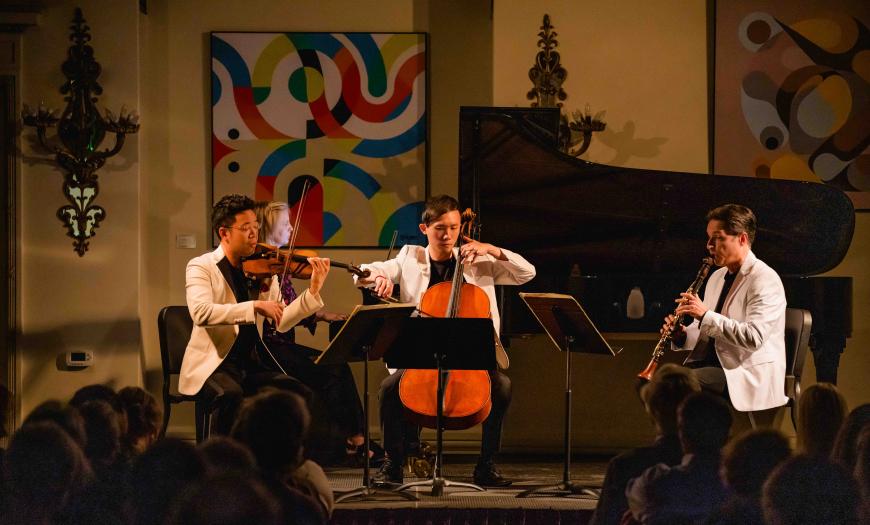
The second half of the evening was devoted to Messiaen’s mighty and stirring Quartet for the End of Time, famously completed when the French composer was imprisoned at the German Görlitz camp in World War II. Like Crumb’s work, this one is structured on allusively titled — in this case explicitly religious — sections, such as “Crystal Liturgy,” “Dance of fury,” and “Praise to the eternity of Jesus.”
At 45 minutes, the piece is longer than many symphonies and has a variety and amplitude that transcends the chamber music scale. Clarinetist Jose Franch-Ballester joined violinist Huang, cellist Sihao He, and pianist Orli Shaham in a fully committed, if sometimes wayward account of this great work.
The two string players gave the opening section a tender, quizzical air, as if they were gently probing the discoveries to come. Subsequent passages took on an angular, driven bluntness or lyrical calm. Birdsongs, a Messiaen staple, turned up, as birds themselves can do — seemingly out of nowhere.
The Quartet delivers its most expansive, impassioned statements in three ample solo passages. The first is for clarinet alone. If Franch-Ballester didn’t display the most alluring tone, his phrasing and dynamic control were splendid. Again and again, his woodwind crescendos rose from eerily soft pianissimos to fearless double fortes amid scampering passage work. He’s cello solo, played against thrumming piano chords, began uncertainly but ripened into an expression of mourning and defiance.
The performance reached its anguished, gripping peak in Huang’s violin solo. From scowling low notes to crystalline harmonics and the rising tide of cresting phrases, Messiaen’s fervor shone through. Even with a piano that sounded a little muffled in the coffered-ceilinged hall, this Quartet felt in the end like a joining of united fellow spirits.



